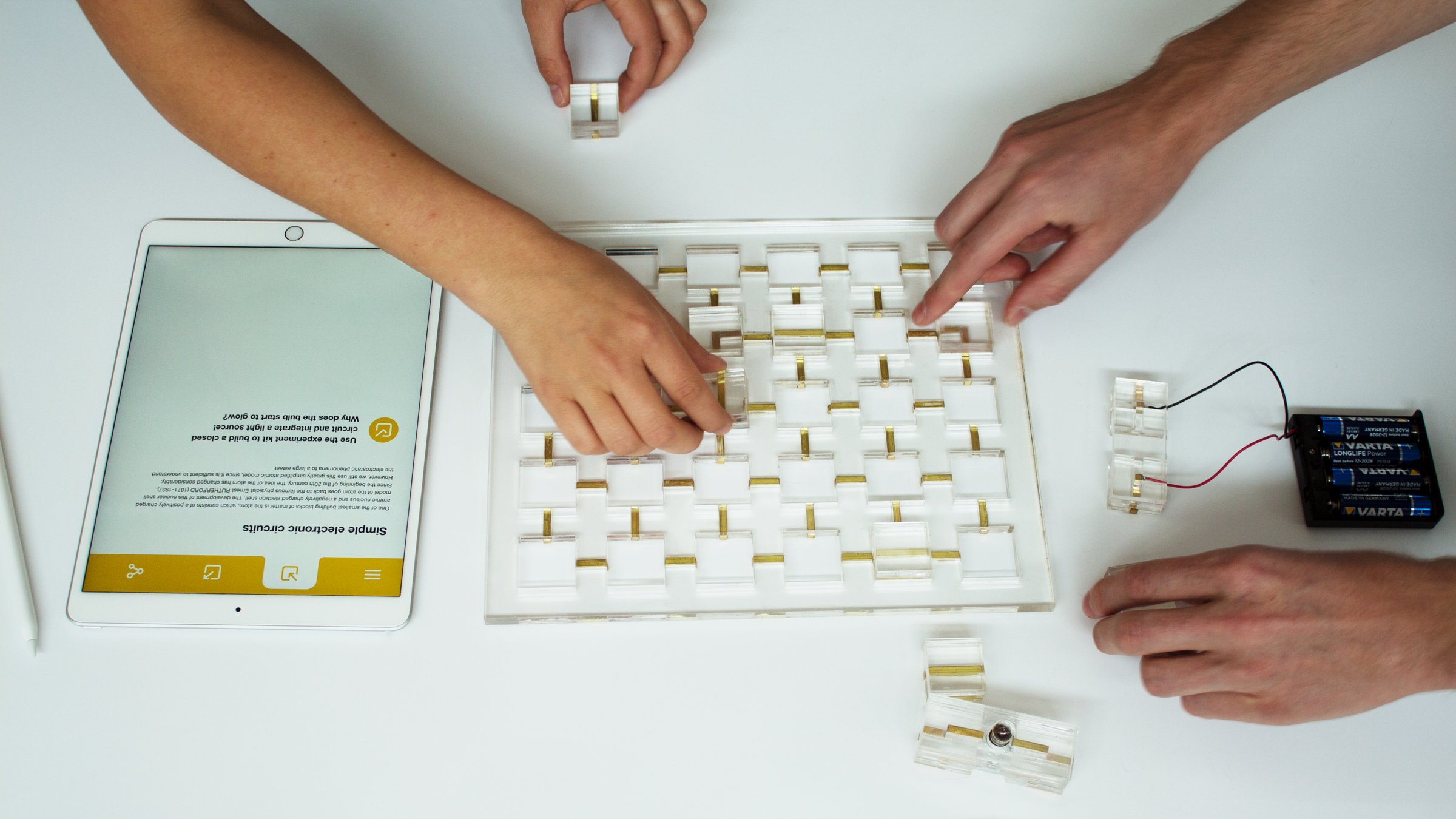
There is a close connection between the sense of touch and the learning process of humans. The ability to understand content more deeply by
exploring it with our hands is slowly being lost in schools due to digitalisation. That’s why I was looking for a solution how to understand content from physics lessons with this ability and then process it with the advantages of digitalisation.
The outcome is an experimental kit on the subject of electric circuits with an associated application. The kit with the base board and the bricks has a playful character and offers the students both flexibility and clarity. The application provides teachers with flexible lesson preparation and encourages students to work individually – with all the possibilities of the digital world.
The result is a new way of working for the classroom – first exploring with the hands and then postprocessing digitally.
Product Design 6
Lea Dörr
Supervisor
Claus-Christian Eckhardt
2019
Lund University

How can we understand the world by grasping with our hands?
According to developmental psychologist Jean Piaget, children learn mainly by imitating, playing and touching objects. Various studies have proven the close connection between the sense of touch and learning processes.
“We are haptic human beings who have a need for interaction with the environment.”
– Martin Grunwald
Grundwald‘s thesis: through the introduction of computers into the classroom, children lose not only their connection to natural objects but also to their own bodies.
Which educational tools are available on the market?
Probably the biggest innovative products on the market are Lego Education and Apple Education. Lego already offers kits for experiments in the field of physics and offers a high level of what we call “begreifen” in German – the deeper understanding through exploration with our hands. However, the structure is too complex to be implemented in the classroom and LEGO does not provide a good platform for student mentoring. When it comes to individual student support, Apple Education with its Classroom App is already very strong. Unfortunately, all content is only learned digitally on the screen of the device.
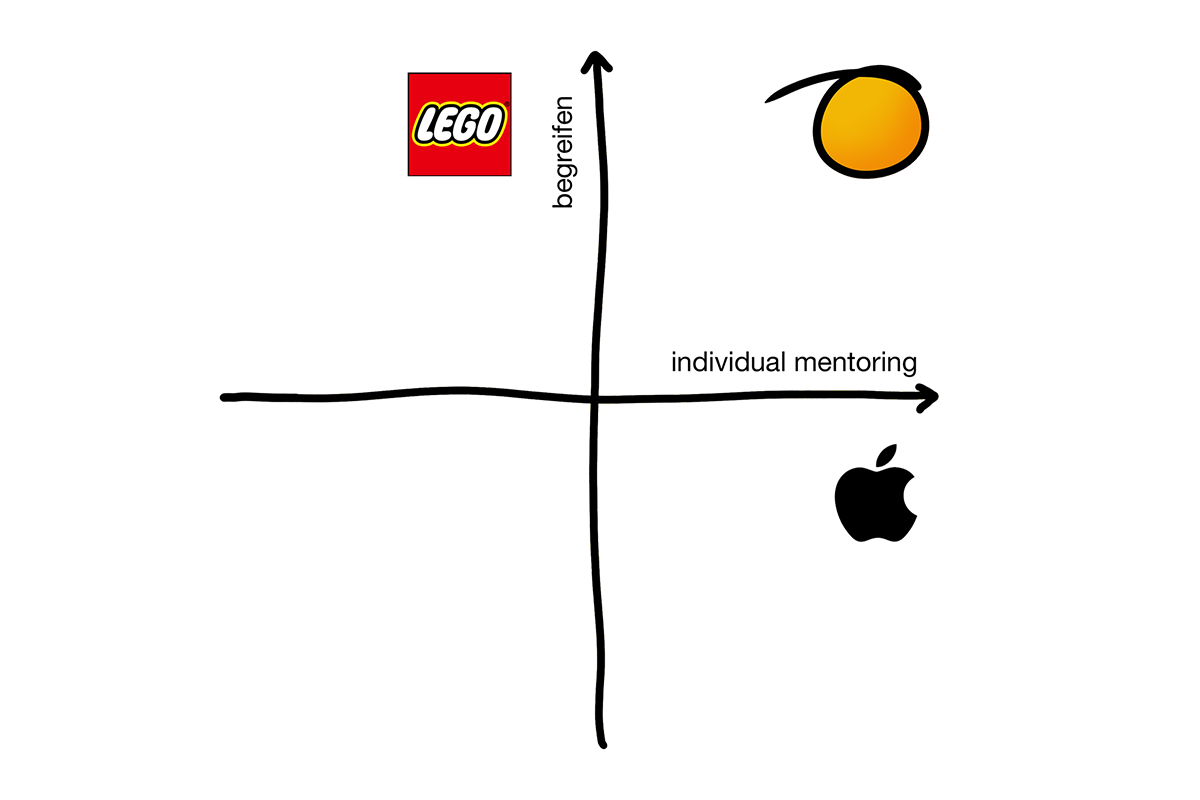
How can we connect the two strengths?
The only way to combine the two strengths so far is to code something with the help of Apple Education and bring this code to life using LEGO robots. But I want to go the other way: Is it possible to first explore something with my hands and then capture my findings digitally?

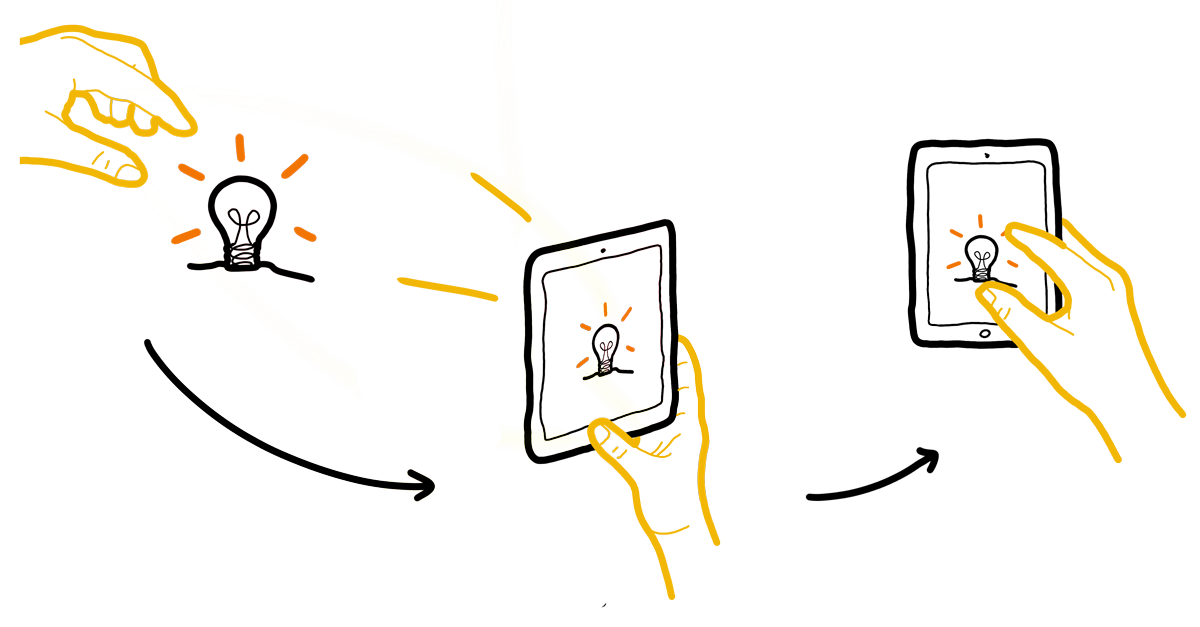
The workflow
The workflow starts with the hands-on experiment, where the student can fully understand the teaching content based on the physical experiment.
The digital component is only included after this process has been completely accomplished.
All findings can now be stored digitally and can be retrieved and edited in the post-processing.
Concept I
Generating electrical circuits by connecting individual modular bricks.
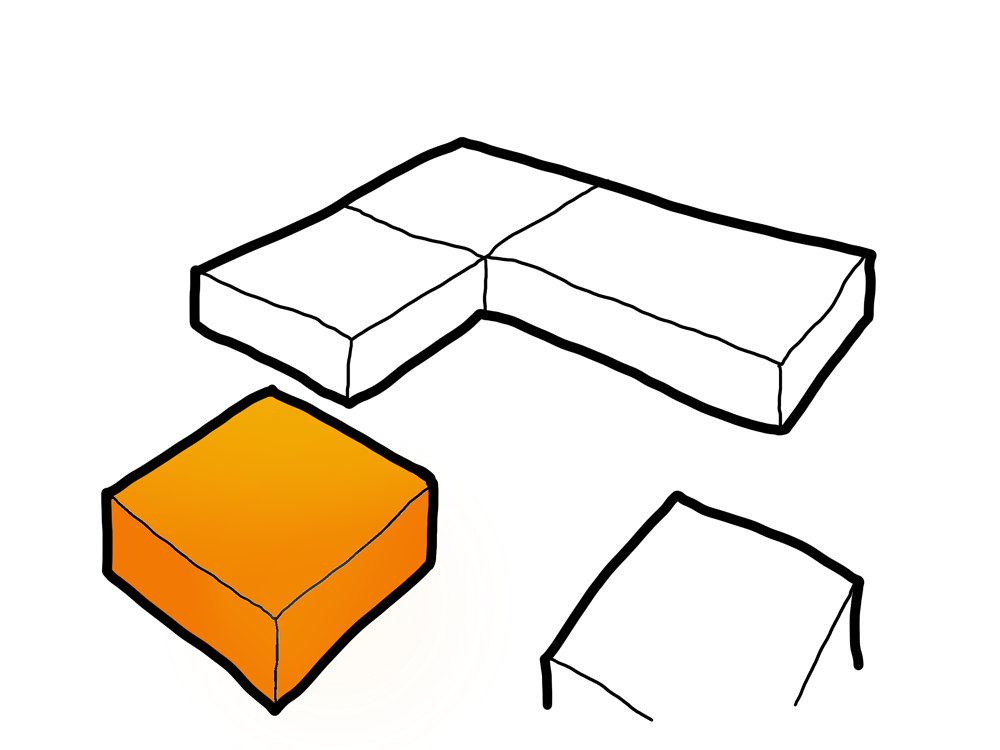
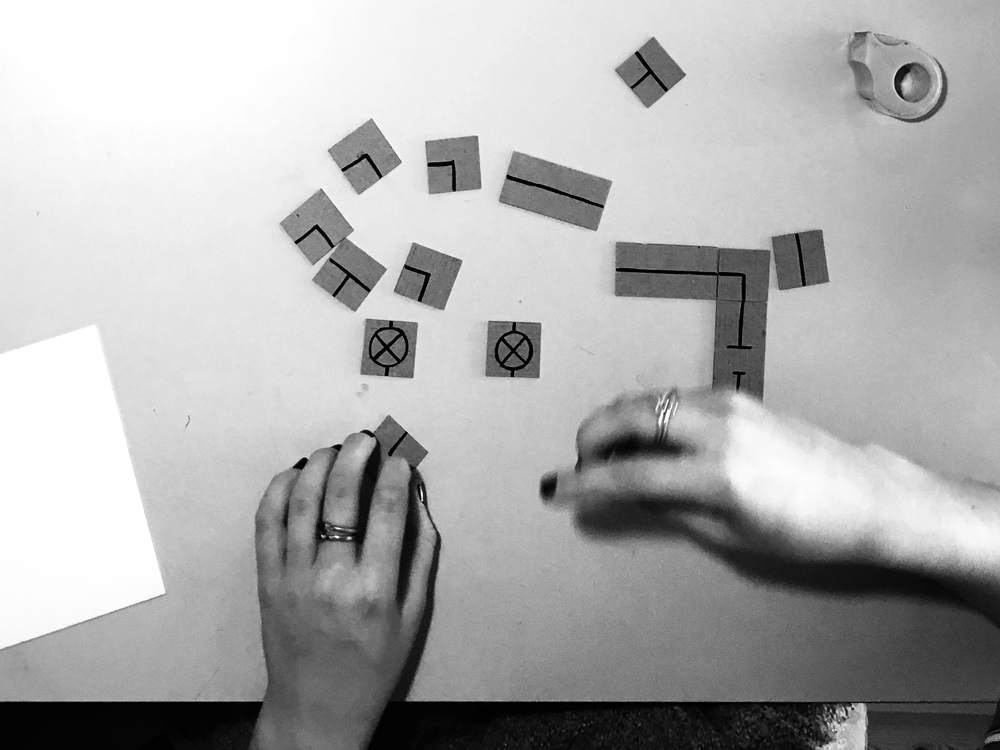
Concept II
Generating electrical circuits by wiring on a base board.
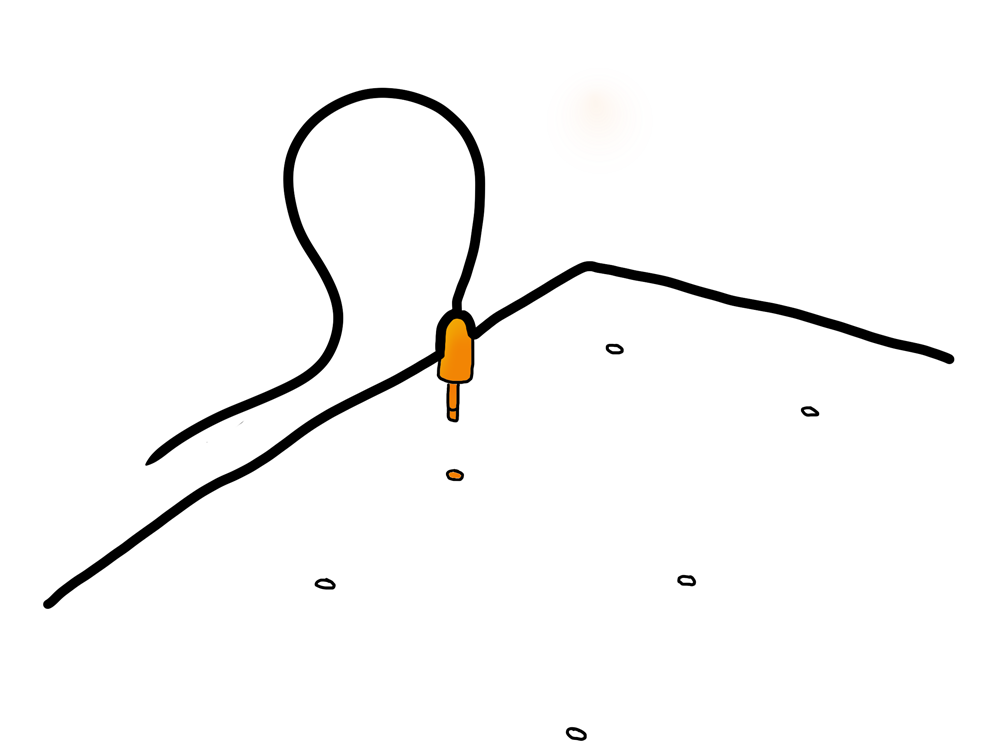
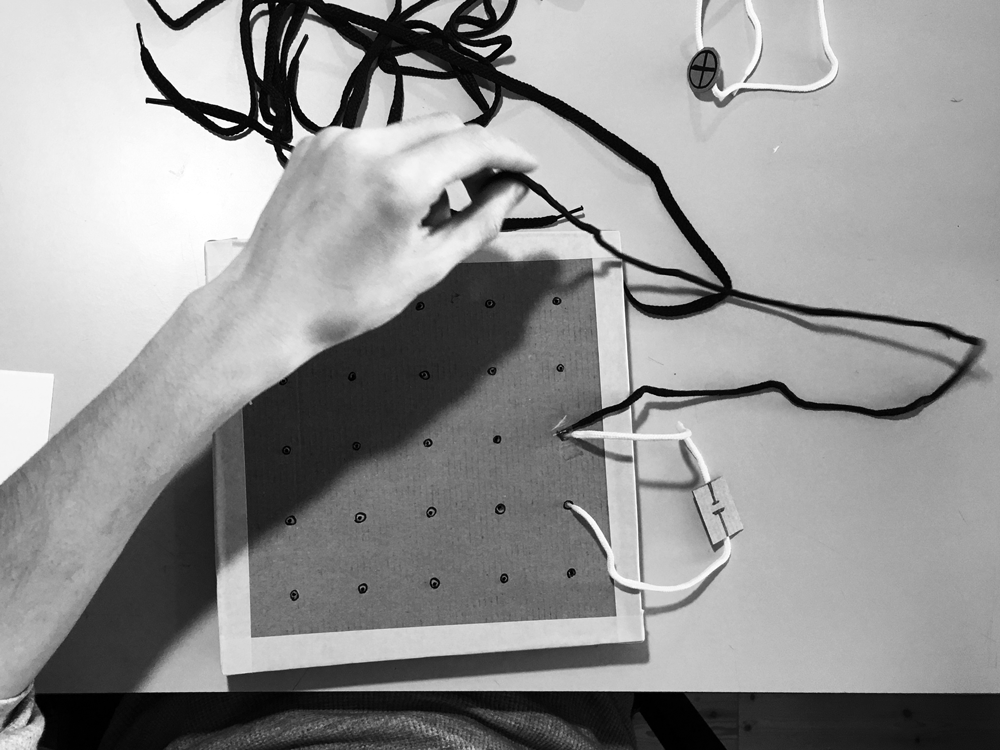
Concept III
Generating electrical circuits by mounting bricks on a base board.
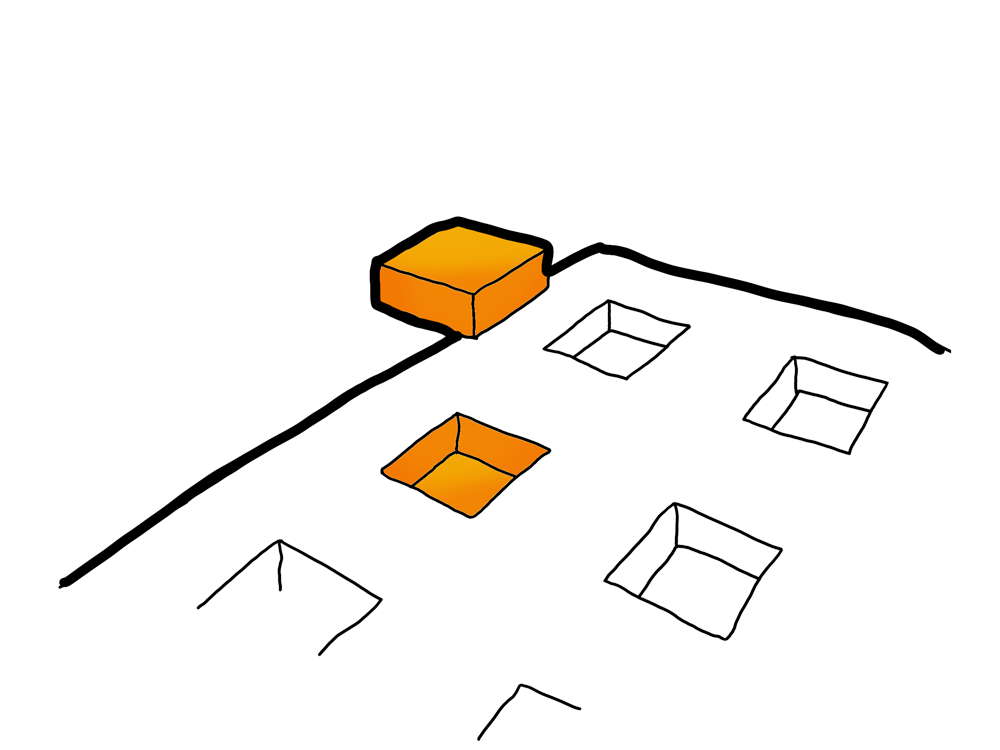
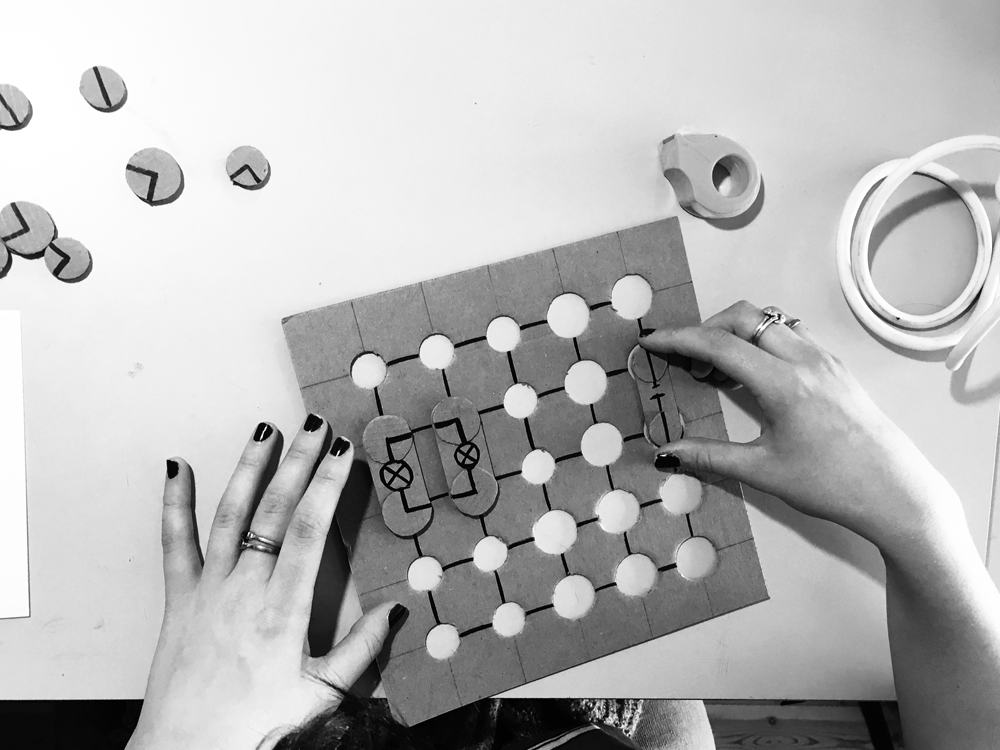
Findings and refinement
The clear result was that cables only cause a lot of confusion, which had a very negative effect on all aspects of user testing. Both Concept I and Concept III were very clear and easy to understand. The loose modules offer the user maximum freedom in generating circuits. The concept with the building bricks and the base board limits the user a bit, but it gives a little more clarity and gives the experiment a playful character. The variant with the fixed grid is preferable, especially for use as a teaching tool in schools, as it provides a framework for the experiment and assists the pupils in their playful discoveries.
By mock-ups with different sizes of the components and conductors, I tried to find a proportion that offered the greatest possible clarity. The size of the components, such as the light bulb, and the possible circuits then determined the final size of the components and the grid.
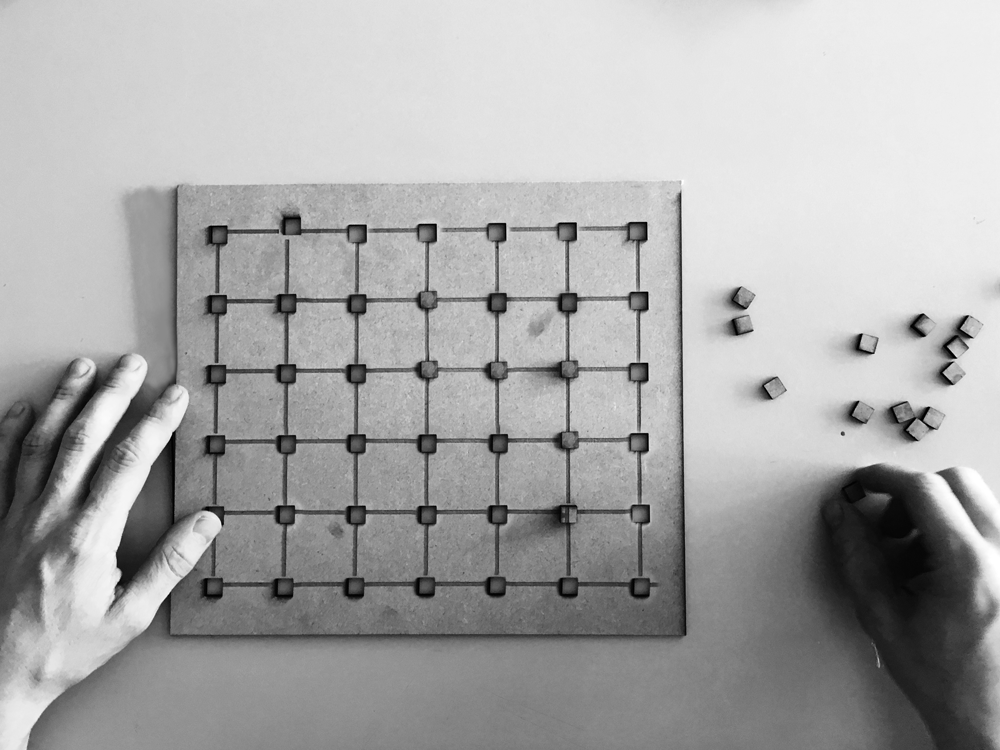
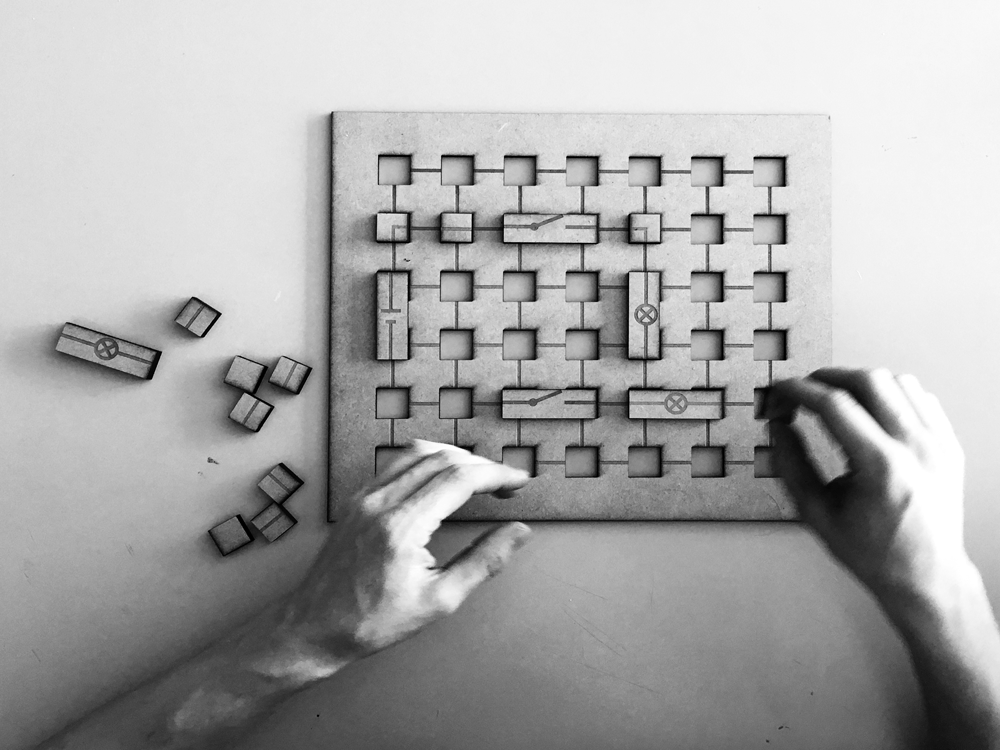
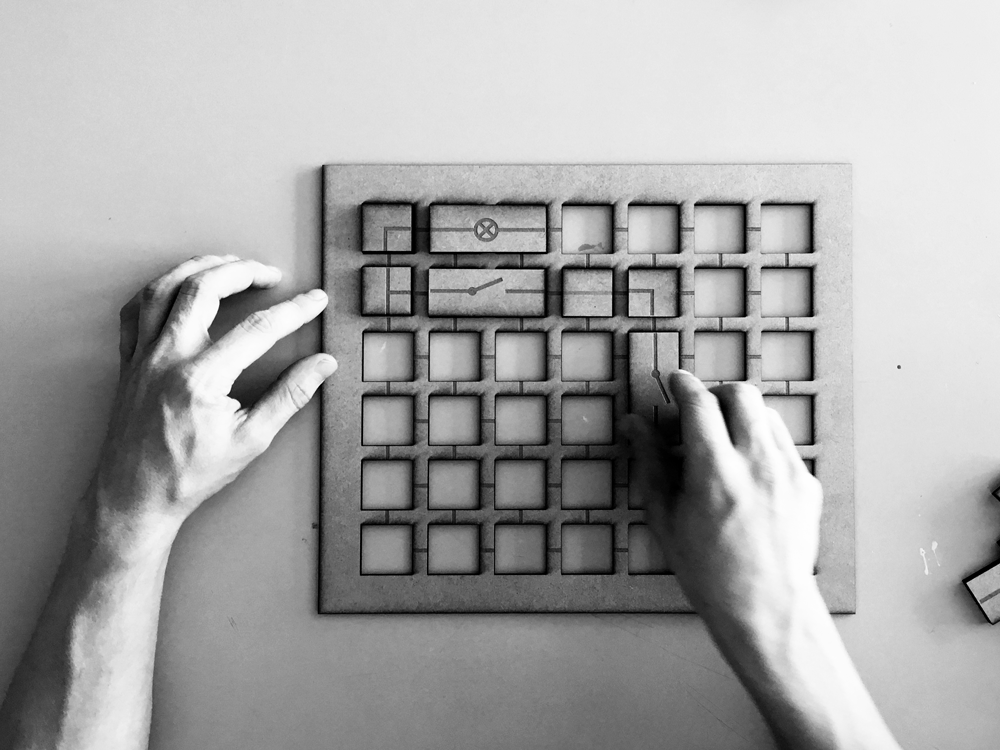
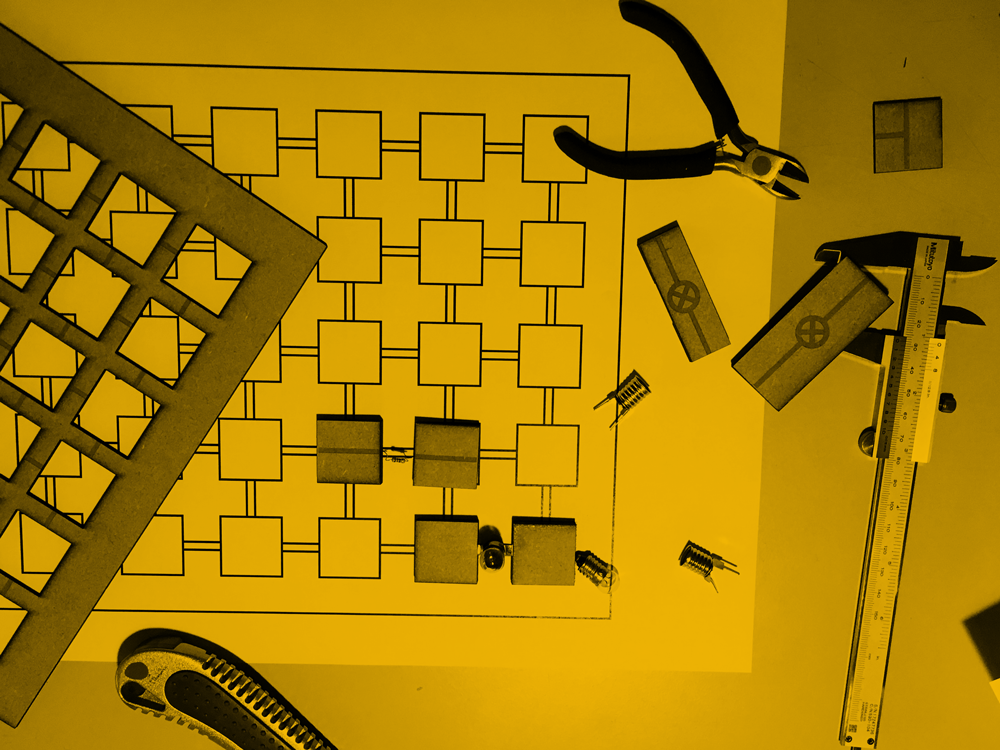

Reflection
This project, which was created at the IKDC in Lund, Sweden, was a great joy for me, especially in its conception. Developing an understanding of when digital and when analog teaching methods are more useful and how they can work together to generate the best possible understanding of the teaching content was particularly exciting for me. In any case, I was very happy with the research I was able to do on the topic at an international high school in Lund. However, I would have liked to test the concept with the pupils instead of with my fellow students. I rather focused on the analog part and in retrospect I would have liked to go further into the digital part, which was a bit neglected.